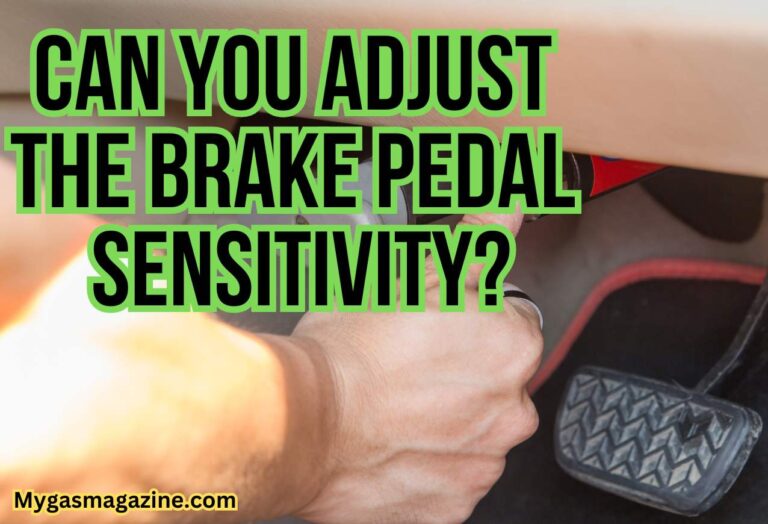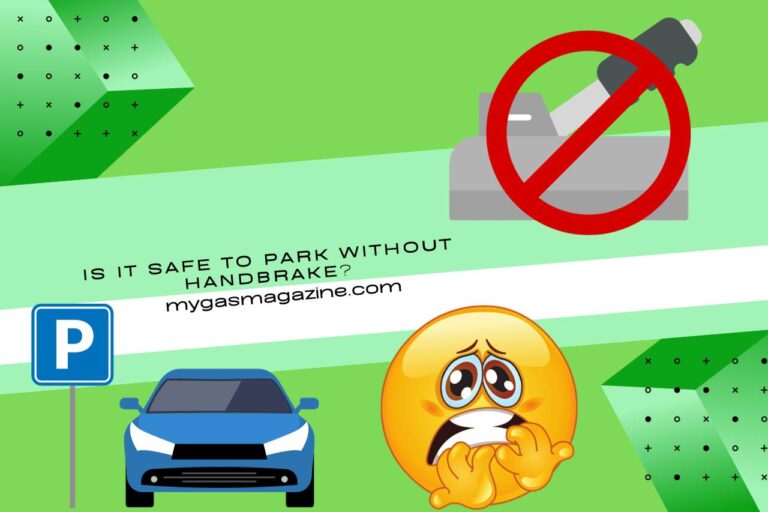How to Adjust Brake Pedal Height?
If your brake pedal is too high or too low it can be uncomfortable and challenging to brake smoothly. In such situations, adjusting the brake pedal height can improve your driving experience and ensure optimal brake performance. So, how do you adjust the brake pedal height?
What Is The Ideal Height of Brake Pedal?
In general, the brake pedal should be positioned so that it is easy to reach and operate comfortably.
A good rule of thumb is that the brake pedal should be at a height where your foot can rest on it comfortably without having to stretch or lift your leg too high. When you press the brake pedal, your leg should be slightly bent at the knee, allowing for easy and efficient braking.
It’s important to note that the brake pedal height should also allow for enough clearance between the pedal and the floor to prevent accidental contact or interference while driving.
Ultimately, the ideal brake pedal height is one that allows for comfortable and safe operation of the vehicle, so it may vary from person to person. Adjusting the brake pedal height to suit your comfort and driving style can improve your overall driving experience.
How to Adjust Brake Pedal Height?
The brake pedal height adjustment mechanism is typically located near the top of the brake pedal assembly, under the dashboard. It may be a nut or bolt that can be turned to raise or lower the pedal.
You may need to remove a cover or panel under the dashboard to access the adjustment mechanism. Use caution and refer to the vehicle’s manual for specific instructions.
Use a wrench or socket to loosen the adjustment nut or bolt. Turn the nut or bolt clockwise to raise the pedal or counterclockwise to lower it. Make small adjustments and test the pedal height until it feels comfortable.
Once you’ve achieved the desired pedal height, tighten the adjustment nut or bolt securely. Double-check that the pedal is at the correct height and that the adjustment is secure.
Before driving, test the brake pedal to ensure it feels comfortable and operates smoothly. Adjust as necessary for optimal comfort and performance.
How is Brake Pedal Height Measured?
Brake pedal height is measured from the pedal pad to a fixed point on the vehicle’s floor. To measure, locate the reference point under the pedal at rest, then use a tape measure to determine the distance.
It’s crucial to measure perpendicular to the floor for accuracy. Compare the measurement to the manufacturer’s specifications to ensure it falls within the recommended range. If adjustment is needed, follow the vehicle’s manual for the correct procedure.
After adjustment, recheck the height and test the pedal’s feel and function before driving. Proper brake pedal height is essential for comfortable and safe driving, ensuring optimal brake performance.
What are the Common Causes of Brake Pedal Height Changes Over Time?
Brake pedal height changes over time due to various factors. As brake pads wear, the pedal must travel further to engage the brakes. Fluctuations in brake fluid level, whether low or overfilled, can also affect pedal height.
Additionally, wear on brake components such as the master cylinder, calipers, and lines can alter the pedal’s height. Leaks in the brake system lead to fluid loss and subsequent pedal height changes. Improper brake maintenance, such as neglecting to bleed the system or replace worn parts, can cause pedal height variations.
Incorrect adjustment of brake components, such as the booster or pushrod, also affects pedal height. Furthermore, general wear and tear on the vehicle’s brake system and age-related changes contribute to pedal height alterations. Regular brake system inspection and maintenance can help identify and rectify pedal height changes for safe braking performance.
Can Adjusting the Brake Pedal Height Affect Other Components of the Braking System?
Yes, adjusting the brake pedal height can potentially affect other components of the braking system, though the impact is typically minimal if the adjustment is done correctly.
- If the brake pedal height is significantly altered, it may change the position of the pushrod that connects the brake pedal to the master cylinder. This change could affect the amount of force applied to the master cylinder when the brake pedal is pressed.
- In vehicles equipped with a brake booster, adjusting the brake pedal height may change the angle or position of the brake booster pushrod. This change could affect the performance of the brake booster, potentially impacting brake pedal feel and responsiveness.
- While less common, a significant change in brake pedal height could put additional stress on brake lines and hoses, potentially leading to leaks or damage over time.
- If the brake pedal height is adjusted too high or too low, it could result in uneven wear on the brake pads, affecting braking performance and longevity.
What are the Potential Risks of Not Adjusting the Brake Pedal Height Correctly?
Not adjusting the brake pedal height correctly can lead to several potential risks and issues. Here are some of them.
- If the pedal is too high or too low, it can affect the driver’s ability to apply the brakes effectively, leading to reduced braking efficiency and longer stopping distances.
- A poorly adjusted brake pedal can cause discomfort and fatigue for the driver, especially during long drives or in heavy traffic.
- A brake pedal that is not correctly adjusted can increase the risk of accidents, especially in emergency braking situations where quick and precise braking is crucial.
- Incorrect pedal height can cause uneven wear on the brake pads, leading to premature wear and potentially costly repairs.
- Improperly adjusted pedals can put additional stress on brake components, such as the master cylinder and calipers, leading to premature wear and potential damage.
- In extreme cases, a badly adjusted brake pedal can lead to a loss of control over the vehicle, especially in situations where precise braking is required.
- In some jurisdictions, driving a vehicle with improperly adjusted brakes can lead to legal consequences, including fines or penalties.
Related
- Can You Make the Brake Pedal Bigger? Good Idea?
- Brake Pedal Not Fully Returning? 12 Possible Causes Explained


Meet Lakith, the driving force behind MyGasMagazine.com. A seasoned mechanic with over 7 years of hands-on experience in our family-run Gas Mag Garage, Lakith combines his technical expertise with a deep passion for cars. His journey in the automotive world began alongside his father, learning the intricacies of car repair and maintenance. Today, as the founder of MyGasMagazine.com, Lakith shares his wealth of knowledge, offering readers a unique blend of practical advice, industry insights, and engaging stories from the vibrant car culture of Sri Lanka.








2 Comments
Comments are closed.